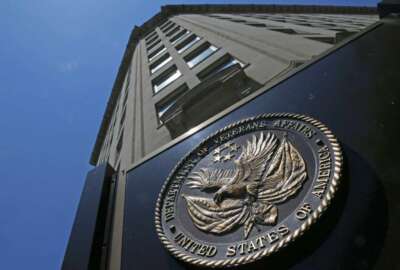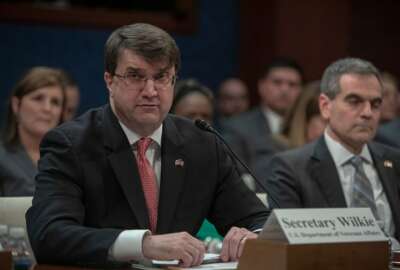

The Department of Veterans Affairs said it's ready for MISSION Act implementation by June 6, despite concerns from Congress, the U.S. Digital Service and at least...
Initial implementation of the VA MISSION Act may not be perfect, but the Department of Veterans Affairs insists it’s ready to roll out a new, consolidated community care program by the congressionally-mandated June 6 deadline.
“Are we going to get it all right? No. Are we going to deliver care on June 6th? Yes. The question is are we going to be as efficient as we should be? Are there going to be wait times that will grow because of this?” Richard Stone, VA’s acting undersecretary for health, told members of the Senate Veterans Affairs Committee Wednesday afternoon. “We are confident that we’re doing everything we possibly can to hit June 6 running.”
But veterans service organizations and members of Congress are skeptical that VA will, in fact, be ready.
“The VA has had a full year to get this program up and running,” Senate VA Committee Ranking Member Jon Tester (D-Mont.) said at a hearing on VA MISSION implementation. “If veterans are going to see a delay in care because the program isn’t ready to go, the best time to tell us that is today.”



The U.S. Digital Service (USDS) recommended VA scrap its initial version of the decision support tool and start over. The tool itself is supposed to help VA providers determine whether their patients meet new criteria to see a doctor in the community.
Under VA’s new access standards, veterans can see a community provider if they’ve been waiting for more than 20 days for primary, mental health and non-institutional extended care services, or if they face a 30-minute drive to the nearest VA facility.
Average drive and wait times tick up to 60 minutes and 28 days for certain kinds of specialty care under VA’s proposed regulations.
The previous legislation, the Veterans Choice, Accountability and Transparency Act of 2014, allowed veterans to visit a community provider if they lived 40 miles away from the closest VA medical facility or if they had been waiting 30 days or longer for VA care.
In theory, providers would use the decision support tool first to see if their patients even qualify for community care — and then have a discussion with those patients about their options.
In its assessment of the decision support tool, the Digital Service recommended veterans be able to use the tool themselves to see if they qualified for community care. It also suggested VA develop a process to resolve potential disputes with veterans about their eligibility.
Yet VA didn’t suggest it needed more time to prepare the decision support tool or train its employees on the new system or access criteria.
“We definitely appreciated USDS’ input with regard to the support tool,” said Kameron Matthews, deputy undersecretary for health for community care at the Veterans Health Administration. “We are still moving forward with [the Office of Information and Technology’s] development of the tool. We’ve had multiple demos… We actually have already started training on an online and virtual basis of providers in the field as well as program officer leaders. We do have full intent to have [the tool] deployed by June 6.”
VA said it hadn’t and likely wouldn’t implemented all the Digital Service recommendations by the June 6 rollout date.
The Digital Service “brought a lot of expertise to table that needed further discussion with our IT individuals,” said Jennifer MacDonald, VA’s MISSION Act lead. “That has taken place, and we have learned and grown from the [USDS] report. We have worked in collaboration with them to make sure that the tool we’re delivering on June 6 is excellent and does save providers time.”
VA facilities nationwide had initially scored a 59 out 100 in their level of preparedness for MISSION Act implementation. That score also concerned senators on the VA committee, but the department stressed the score was going up every day. Training for providers, Matthews said, would continue through and after the initial June 6 deadline.
When it came to the Digital Service and its involvement with VA’s decision support tool, the department on Wednesday took on a much different tone than VA Secretary Robert Wilkie had initially used when he spoke about the USDS report last week. He told House lawmakers he refuted how he found about the report and noted that its contents focused more on policy, rather than technology implementation. Melissa Glynn, VA’s assistant secretary for enterprise integration, had initially requested USDS’ assessment and said it was standard practice in such a major IT rollout.
Stone has played down the role that the decision support tool would play in VA MISSION Act implementation on June 6. VA currently meets about 310,000 visits and buys roughly 50,000 visits in the community a day, he said. Despite the department’s new access standards, Stone doesn’t expect those numbers to increase dramatically with VA MISSION Act implementation.
But at least one veterans service organization has said the department should delay part of VA MISSION Act implementation.
“Based on recent VA reports to Congress on access and quality standards, as well as the U.S. Digital Service report on VA’s progress of implementation, it has become clear that VA is not yet prepared, nor likely to be prepared within eight weeks, to implement significantly more complex and expansive access standards with risking serious disruption to veterans health care,” Adrian Atizado, deputy national legislative director for the Disabled American Veterans (DAV) organization, said in his testimony to the committee.
DAV is urging VA to use its current access standards until it can assure both Congress and veterans that its new drive and wait standards are fully operational with little disruption.
The Government Accountability Office is also urging caution about VA MISSION Act implementation, mostly based on its experience in tracking the department’s handling of the Choice program.
Copyright © 2025 Federal News Network. All rights reserved. This website is not intended for users located within the European Economic Area.
Nicole Ogrysko is a reporter for Federal News Network focusing on the federal workforce and federal pay and benefits.
Follow @nogryskoWFED
